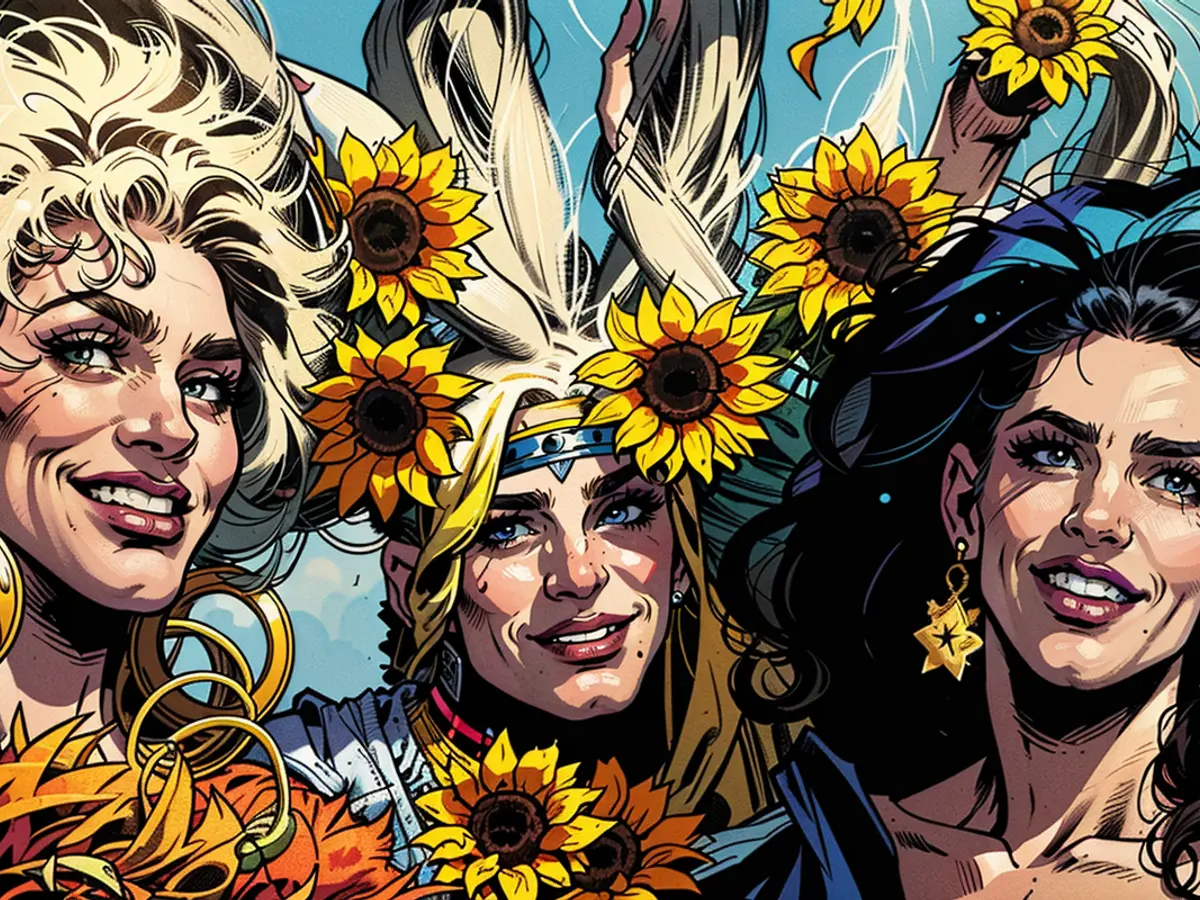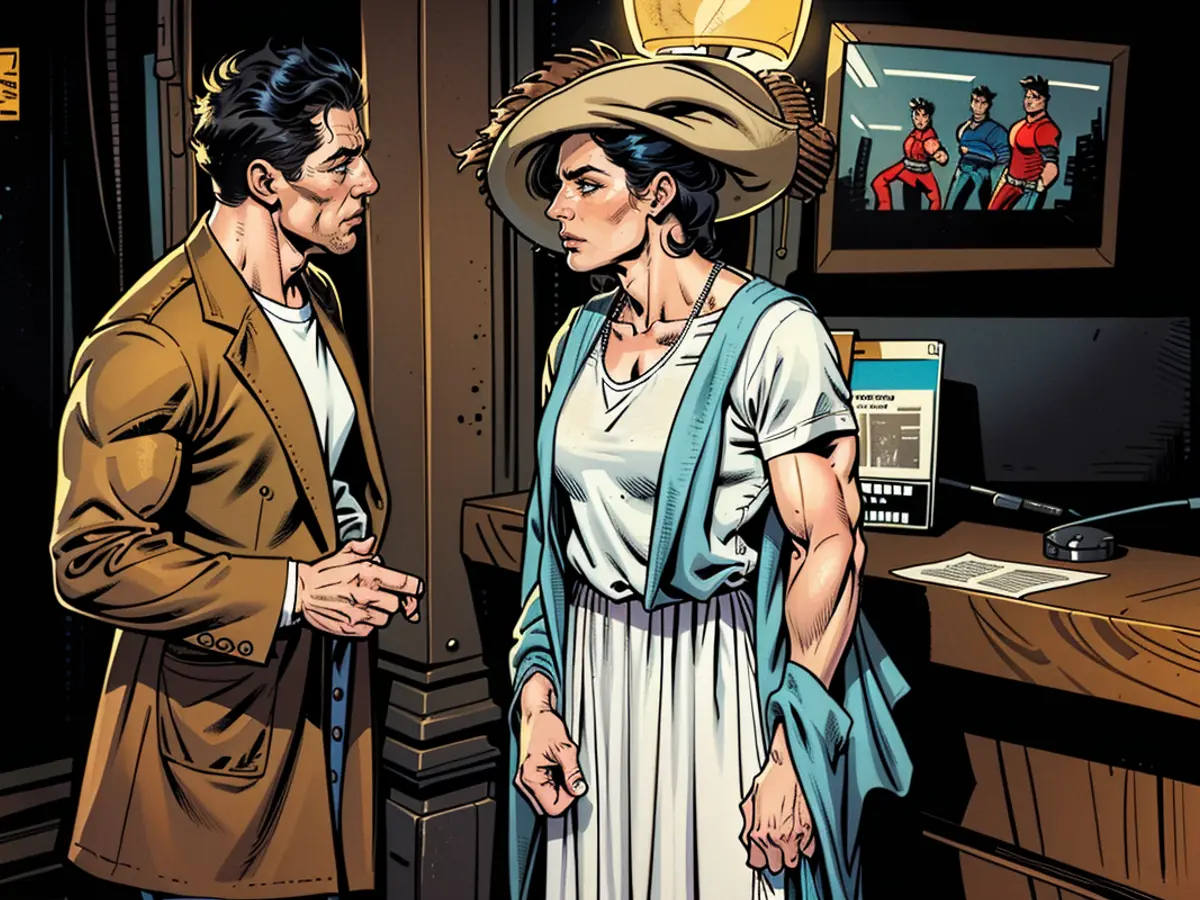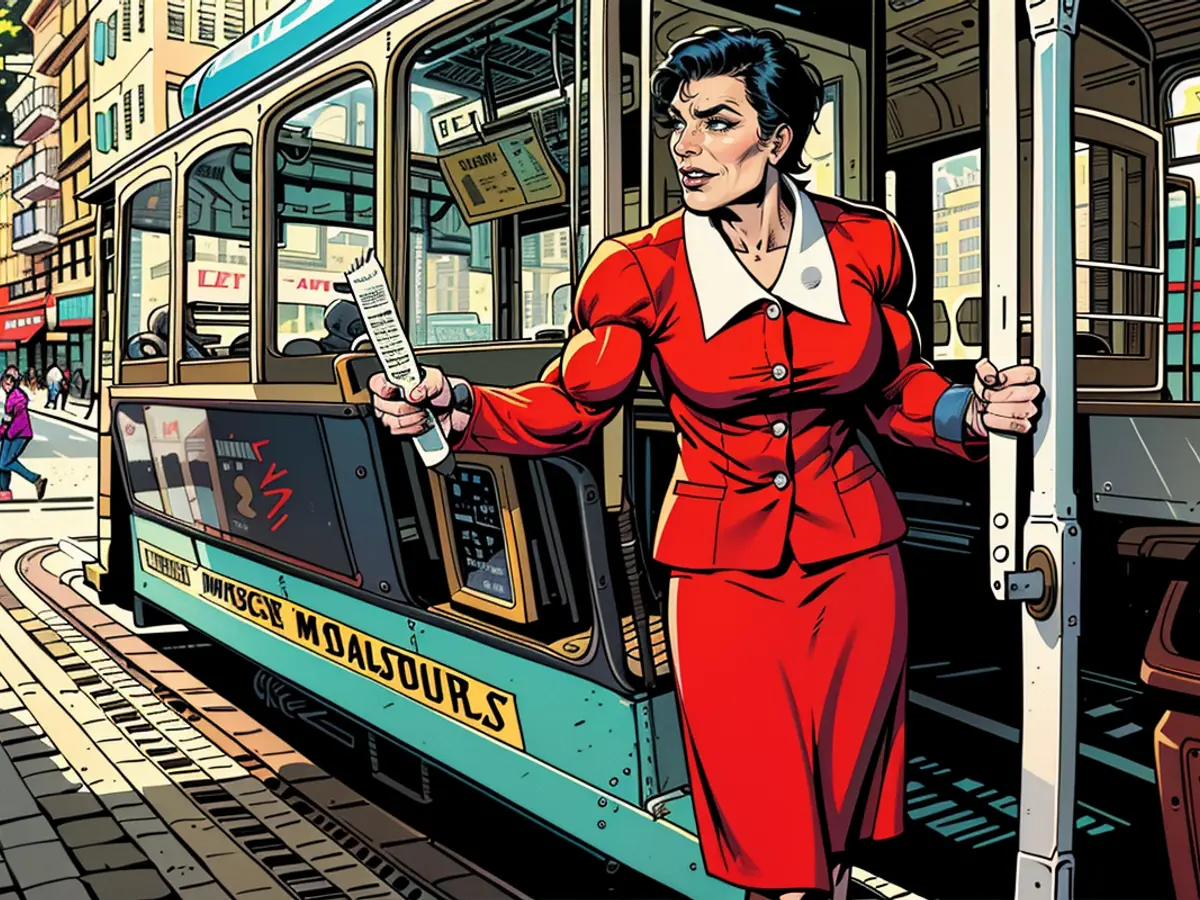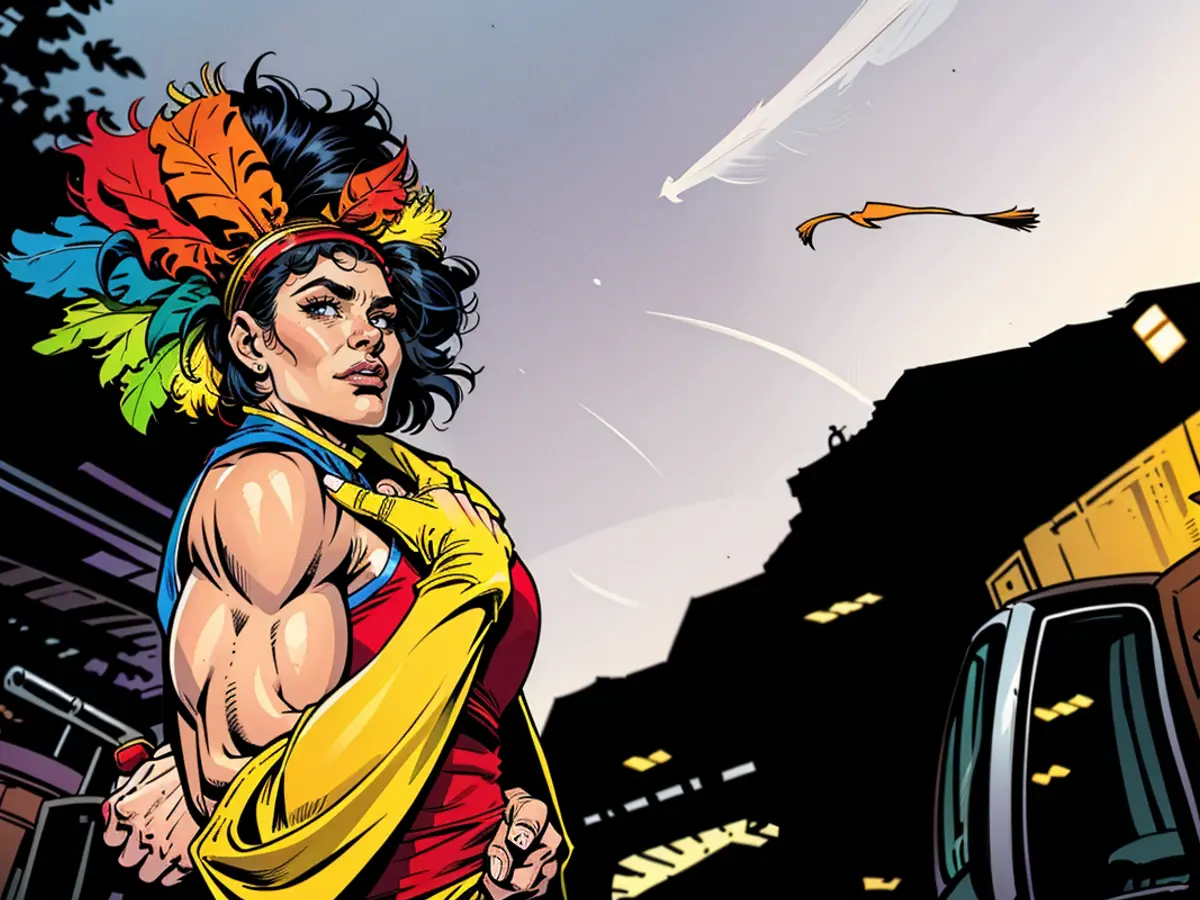The US has a deep-rooted tradition of drag performances. Exploring why this art form is highly unlikely to be suppressed.
Drag is the commanding performance of individuals wearing extravagant outfits and showcasing themselves as they belt out power ballads or dance to disco hits. Drag is also the underground artist twirling on stage to the beats of "Papa Don't Preach" by Madonna.
This world includes the glitzy cast of "RuPaul's Drag Race: All Stars" and the local performers with dedicated fan bases. We have drag queens like Meatball, dressed as a horrifying caricature of George Santos, singing from the "Greatest Showman" anthem "This is Me," and drag kings like Mo B. Dick with his flaming red pompadour and drawn-on goatee. It's a mix of cisgender and trans men, trans and cis women, and nonbinary individuals. The performers are gay and straight. They identify as masculine, feminine, neither or both.
According to Joe E. Jeffreys, a drag historian and adjunct instructor at New York University, "Drag is the theatrical exaggeration of gender." Jeffreys notes that the art form constantly defies what people believe about gender.
At its heart, drag is an art form that affirms and uplifts LGBTQ people who engage in and enjoy it. However, it has angered conservative lawmakers since the 19th century when the first attempts to restrict drag were made.
Anti-drag sentiment peaked in 2022 as some US states introduced legislation that would affect where and when drag could be performed. While most of these efforts failed, they have fueled harmful rhetoric around drag performers and the art form itself.
Drag has become more visible in recent times through popular shows like "RuPaul's Drag Race" and public events like drag brunches, drag bingo, and drag queen story hours, where drag performers read children's books to young audiences, often at libraries.
This art form tests and questions gender and social norms, inviting audiences to do the same, and as Jeffreys states, it's "inherently political."
LGBTQ historians and performers affirm that drag will endure despite any fearmongering and hatred. They say its resilience is deeply rooted in the art form's long, defiant history.

The first "queen of drag" was a freed slave
Drag may be as old as gender norms, said Larry La Fountain-Stokes, a professor and chair of American culture at the University of Michigan in Ann Arbor who also performs in drag as Lola von Miramar.
"As long as people have been using clothes or marking gender in different ways, you've had people transgressing and challenging those conventions," he said in a phone interview.
New York's Harlem neighborhood is considered the origin of drag balls in the 1860s. There, Black queer and trans individuals wore dresses and wigs to perform safely and creatively. One theory about the origin of the word "drag" suggests it refers to how gowns "dragged" across the floor, while another theory links it to Polari, a slang language used by queer British men.
One of the first to call themselves a "queen of drag" was William Dorsey Swann. A formerly enslaved man, Swann began hosting guests, many of whom were former slaves, for drag parties in his Washington, DC home.
When Swann faced off against police in a cream satin gown after they raided one of his parties in 1888, he was arrested and charged with "being a suspicious character." He was arrested several more times throughout his life while defending queer friends during raids, according to Channing Gerard Joseph, an LGBTQ historian and Princeton University instructor who claims to be the first academic to highlight Swann's role in drag history.
Swann's drag parties and subsequent arrests were early acts of resistance in the growing queer liberation movement in America, in which drag has had a central role for over a century, said Nino Testa, an associate professor of professional practice in women and gender studies at Texas Christian University in Fort Worth.

"The pleasure was the resistance," Testa said in a phone interview. "The celebration of queer joy when it's been denied in all these other spaces is activism."
Drag performers were often the stars of the vaudeville scene in the early 20th century. "Female impersonator" Julian Eltinge was a renowned performer who published a magazine and launched his own makeup line, according to Jeffreys. Drag kings who display exaggerated forms of masculinity also dominated stages across the United States, demonstrating that masculinity could also be challenged.
The term "homosexuality" gained widespread usage in the 1930s, as did "pansy acts" - hyper-feminine queens with acts that included innuendos about same-sex desire. Although the 1950s were thought to be a bleak period for queer and trans individuals, Jeffreys pointed out that some drag acts like the Jewel Box Revue enjoyed national success and appealed to mainstream audiences.
Even though the counterculture movement took over the 60s and LGBTQ communities began to form in major cities, dressing in drag in public could still be dangerous. The police frequently raided gay bars in the US, with laws prohibiting bars in New York from serving a drink to a "known homosexual" until the late '60s.
Spellbinding performers from this era also experimented with the traditional drag format, setting up their own drag houses, and forging close-knit chosen families. This was an answer to the racism that numerous Black and Latino queer and trans individuals faced within the gay pageant scene. Additionally, this era witnessed the introduction of lip syncing as a norm, and drag becoming less binary - "genderf**k" drag was used to describe performers who weren't easily classified as masculine or feminine.
In response to the growing AIDS crisis in the '80s, groups such as the Sisters of Perpetual Indulgence in San Francisco organized, housing AIDS patients and paying for their healthcare. Numerous other drag queens willingly hosted events or donated their talents to fundraising efforts.
Joan Jett Blakk, a drag queen who ran for US president in 1992, was a member of both AIDS grassroots organization Act Up and political group Queer Nation. Blakk never planned to win; instead, she wished to intertwine drag with activism.

“It’s stunning to believe that we had to take to the streets again to save our lives,” Blakk said in a phone call.
The role of trans performers in drag history
Trans drag performers have played a crucial part in drag history - “you can’t write the story of drag without trans people,” Testa said.
As drag gained popularity in the '60s and beyond, many trans women started performing out of necessity due to rampant transphobia and homophobia that made it hard to find other work. Drag provided a means of financial survival, Testa asserted.
Devin Antheus, co-author of the photo book "Legends of Drag" with Harry James Hanson, stated that many of the queens they photographed and interviewed began performing in the '60s and '70s, well before terms like “trans” became popular.
Sylvia Rivera and Marsha P. Johnson, two trans women of color famously connected to the 1969 Stonewall uprising, used various terms to describe themselves over the years, encompassing drag queen, “transvestite,” which then did not carry a negative connotation, or simply trans.
“The younger generation and people who grew up more recently have grown up in a culture where identity categories are considered highly significant and neatly divided,” Antheus said over the phone. “However, many of the queens today, both trans queens who currently self-identify as trans and those who don’t, can recount how they all mixed together in the past.”

Despite belonging to the same community, trans drag queens who performed faced ostracism in certain quarters, particularly from cisgender gay drag queens. Trans drag performers received strong criticism for undergoing gender-affirming therapies, with some complaining that female impersonation’s entire essence depended on maleness.
RuPaul Charles, one of the most famous drag queens globally and the host of the Emmy-winning reality series “RuPaul’s Drag Race” franchise, made a controversial statement in 2018 saying, “I’d probably not” allow trans women who had undergone gender-affirming procedures to audition on the show. However, several trans contestants had already shared their journeys on the series or after their season had ended, including Monica Beverly Hillz, Kylie Sonique Love, and Peppermint.
“Drag is depleted of its danger and irony once it's not done by men, as it's fundamentally a social statement and a big f-you to a male-dominated culture,” RuPaul said in an interview with The Guardian, drawing a stark contrast between the drag and trans movements as separate entities.
RuPaul later backtracked on his statements, and trans performers have featured on the show, with Season 15 winner Sasha Colby proving the evidence. Many 'Drag Race' contestants have gone on to have successful careers in Broadway, touring shows, and recording ventures. However, "Drag Race" has also modified how viewers perceive drag, with no drag kings ever competing on the show, and the judges promoting somewhat conventional beauty norms.
In recent times, various states have proposed laws that could change the locations and times for drag performances to take place. Of the laws directly targeting drag, most were turned down in local legislatures, and federal courts have also halted two drag-specific laws in Tennessee and Montana, according to the Movement Advancement Project, a nonprofit that tracks these issues and more.
Under Tennessee's law, those who perform in drag in areas where kids could see them could be charged with either a misdemeanor or a felony, while Montana's law specifically stopped drag entertainers from hosting storytimes at public libraries. States keep attempting to place limits on drag, though most of these efforts fail.
However, certain states have passed laws with broader restrictions on what they refer to as "adult performances", potentially including drag under this category.

Despite this, the attempts to restrict drag have come as a shock to many in the LGBTQ community. But as Jeffreys remarked, this shouldn't be surprising.
"When something receives that much visibility, there'll always be backlash," he pointed out.
Drag performers and academics believe drag is being used as a distraction from key problems in the US, such as gun violence, poverty, and institutional racism. These issues disproportionately affect LGBTQ individuals, particularly Black trans women.
Though attempts to regulate drag performances in public spaces have mostly been unsuccessful, it's feared the unsuccessful bills could result in increased scrutiny and harm to trans people not involved in drag. Antheus mentioned that, if law enforcement interpret the laws to apply to trans individuals simply wearing gender-affirming clothes in public, they could potentially criminalize the existence of these trans people.
Trans rights have faced assaults in over half of US states, as numerous bills have been introduced to prevent trans youth from accessing gender-affirming health care or participating in sports alongside their peers of the same gender.
No evidence exists demonstrating that drag hurts children, as many opponents of drag claim. They falsely assert that drag performers "groom" or "sexualize" children, another unsupported statement. Drag acts with sexual innuendos and adult themes occur in age-restricted bar or at events where children are not allowed or require parental consent.
Tests, a drag academic, stated that drag shows people of all ages different ways to think about gender and sexuality and encourages viewers to consider their own identities more critically.

"Queer individuals have always devised innovative ways to resist the violence of their experiences and the norms that have tried to limit our ability to live freely," Testa said. "Drag is a form of that resistance. These communities developed as a response to harassment, exclusion, and violence. I'm hopeful, knowing that we've done this before. We've never stopped doing it."
Drag has endured for so long due to its purpose as a platform for self-expression for marginalized LGBTQ and trans people. Alaska Thunderf**k, a contestant on the second season of "RuPaul's Drag Race All Stars" and winner of RuPaul's Drag Race All Stars 4, first became involved in drag to create art free from constraints. In an email, she said, "[Drag is] mostly about having a blast and having pure, joyful fun."
"The wonderful thing about drag is that, the moment you think you've got it figured out, it evolves and becomes something different," Alaska wrote. "That's why we'll always endure."
Read also:
Drag performances often showcase a stylish flair, with performers donning extravagant outfits that reflect their unique personalities and creatively challenge gender norms. (from the given text)
The art of drag has a rich history of pushing stylistic boundaries, from the first "queens of drag" in Harlem's drag balls to the genderf**k performances of the 1960s and beyond. (extending the given text)








